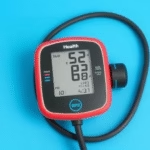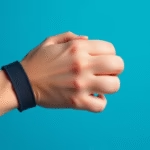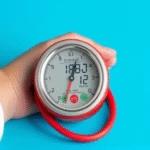Welcome! Today, we will be talking about does an oximeter measure blood pressure. Understanding the function and limitations of an oximeter is essential for anyone seeking to monitor their health. An oximeter is a non-invasive device commonly used to measure the saturation of oxygen in the blood as well as the heart rate. However, it’s important to note that an oximeter does not measure blood pressure. Blood pressure is a different vital sign typically assessed using a sphygmomanometer or digital blood pressure monitor. While oxygen saturation levels can provide important insights into a person’s health, they do not directly correlate with blood pressure readings. Therefore, relying solely on an oximeter for comprehensive health monitoring may not provide the full picture needed for managing conditions that affect cardiovascular health.
Understanding the Oximeter’s Purpose
The oximeter’s primary purpose is to determine the level of oxygen saturation in the blood, expressed as a percentage. This is achieved through a sensor that emits light wavelengths, which reflect the color changes in hemoglobin when oxygen is bound. The readings can indicate whether an individual is getting enough oxygen, which is critical for various bodily functions. However, the oximeter lacks the capability to directly measure blood pressure, which is crucial for understanding the force of blood against artery walls. Individuals who rely on oximeters need to use additional devices, such as sphygmomanometers, to monitor blood pressure accurately. This is essential for comprehensive cardiovascular health assessments.
How Oximeters Work
Oximeters function through a painless method by attaching a small clip-like device to a portion of the body, often a fingertip or earlobe. The device uses LED lights to shine through the skin, measuring the absorbance of light by oxygenated and deoxygenated hemoglobin in the blood. The readings are then displayed as a percentage, with normal levels typically between 95-100%. The device also provides a pulse rate reading by detecting heartbeats, making it a useful tool for individuals with respiratory concerns or conditions such as COPD and asthma.
Difference Between Oximeters and Blood Pressure Monitors
It’s vital to differentiate between the functions of oximeters and blood pressure monitors. Blood pressure is a measure of the force of circulating blood on the walls of blood vessels, whereas oximeters provide information about oxygen levels. A blood pressure reading consists of two numbers: systolic (pressure during heartbeats) and diastolic (pressure between beats). Therefore, while both devices are important for monitoring cardiovascular health, they measure different parameters that are crucial in assessments of overall health.
Why Monitoring Blood Pressure is Important
Monitoring blood pressure is vital as it can help detect potential health issues early. High blood pressure, also known as hypertension, can lead to serious complications, such as heart disease, stroke, and kidney problems. Regular monitoring can help individuals maintain their health, especially those at risk due to factors such as age, diet, and lifestyle choices. By using both an oximeter to check oxygen levels and a blood pressure monitor to assess blood pressure, individuals can ensure they are managing their heart health effectively.
Situations Where Oximeters Are Useful
Oximeters are particularly useful in specific situations, including respiratory therapy, post-operative care, and during emergencies. For patients with lung conditions or those on supplemental oxygen, an oximeter provides immediate feedback on arterial oxygen levels. It can help clinicians and patients quickly determine if a patient requires medical intervention. Additionally, oximeters are valuable tools in the assessment of patients during and after surgeries that may affect breathing or oxygen intake.
Limitations of Oximeters
While oximeters are valuable tools, they do have limitations. Environmental factors such as dark nail polish, artificial nails, and poor circulation can affect readings. Moreover, oximeters do not provide information on CO2 levels, making them insufficient for a complete assessment of respiratory conditions. Users should be aware of these limitations and ensure that they also monitor blood pressure and other vital signs to have a comprehensive view of their health.
When Should You Use an Oximeter?
Using an oximeter makes sense in specific circumstances, especially when a patient has certain health conditions that impact breathing. Individuals with pre-existing respiratory issues, those recovering from surgery, or patients receiving oxygen therapy should regularly use oximeters. Additionally, athletes may use them to assess their oxygen levels during intense training or at high altitudes to prevent hypoxia.
How to Choose an Oximeter
Choosing an oximeter involves considering several factors. Users should look for devices that provide accurate and consistent readings. Features like Bluetooth connectivity, data storage, and ease of use can enhance user experience. Devices that meet FDA regulations and come with a warranty provide additional peace of mind. Reading customer reviews can offer insight into the reliability and functionality of different models.
Frequently Asked Questions about Oximeters
1. **Does an oximeter measure blood pressure?**
No, an oximeter does not measure blood pressure; it measures oxygen saturation and heart rate.
2. **What is considered a normal oxygen saturation level?**
A normal oxygen saturation level typically ranges from 95-100%.
3. **Can an oximeter provide false readings?**
Yes, certain factors such as nail polish, artificial nails, and poor circulation can lead to inaccurate readings.
4. **How often should I check my oxygen levels?**
Frequency depends on individual health needs; patients with respiratory issues may need to check more frequently, while others may only need occasional checks.
5. **What should I do if my oxygen level is low?**
If your oxygen saturation level is consistently below 90%, seek medical attention immediately, as this can indicate a serious health issue.
In conclusion, while oximeters serve a crucial role in health monitoring by measuring oxygen saturation and pulse rate, they do not measure blood pressure. Understanding the distinct functions of these devices helps individuals manage their health more effectively. Blood pressure monitoring is equally important, as it helps in early detection of health issues like hypertension. Peak awareness of both oxygen saturation and blood pressure exemplifies a holistic approach to health. Therefore, employing both medical devices concurrently ensures a broader overview of one’s cardiovascular health. Being informed and vigilant can aid in preventing severe health issues down the line, keeping you on the path toward optimal wellness.
Further Reading
What Type of Psychotherapy Is Best for Anxiety?







